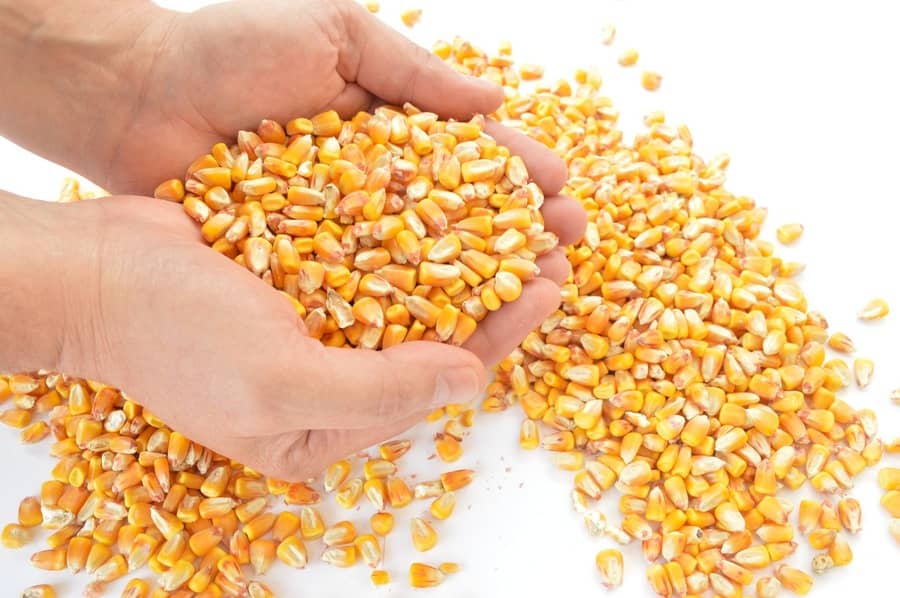Porto Alegre, March 15, 2022 – Overall, the international market is now working on the replacement of the space left by Ukraine and Russia in various commodities, including wheat and corn. And this global crisis reached Brazil in several ways. At first, by the impact on fuel prices, which could be avoided or diluted with tax cuts by governors, then by the global demand in a symptom of panic for Brazilian corn.
The survey points out that nearly 1.2/1.4 mln tons were traded for exports only for March/April and May at Brazilian ports. The second crop was also activated, and the commercialization began to advance to the shipments from June onwards. The domestic market does not seem to want to clash with exporters, but it will be difficult to carry out washouts in the first half of the year with the current prices closed for exports now.
The Ukrainian crisis arrived in Brazil in the form of an exorbitant rise in fuel prices, which could be alleviated if governors accepted proportional reductions in ICMS rates. As politically this possibility does not exist, freight costs are the new inflationary factor in Brazil and agribusiness.
The other situation is what we already pointed out in our last issue, that is, external demand at prices that reflect an immediate panic about purchases. Premiums were USD 190/200 points ahead of the CBOT. So, with corn on the CBOT at USD 7.50, Brazil is selling corn at USD 9.50/bushel. Deals last week in Brazilian ports, mainly the southern ports, were between BRL 109 and 113/bag. We can say that stocks that were starting to be formed to be sold internally ended up being quickly exported. It is not possible to define whether this movement is isolated and temporary or will continue to advance under strong external demand, even with the arrival of the Argentine crop in April.
There were trades in Mato Grosso at up to BRL 85 FOB in the physicals, in Goiás and Minas Gerais at BRL 90/95, in São Paulo at BRL 102/104 FOB, in Paraná at BRL 102/106, and in Santa Catarina and Rio Grande do Sul at BRL 103 to 106. In the last ten days, roughly 1.2 mln tons were traded at high export prices with March/April and May shipments. There were also second-crop sales in Mato Grosso at BRL 75 to 80 for Jun/Sep, and BRL 77/82 in Goiás in the same cycle of shipments. This movement is normal for the second crop, but for the summer crop in the middle of March, in a year of production losses, it is certainly surprising. Agriculture secretariats may have exaggerated the size of summer corn losses in the South region. Even with this hypothesis, the flow of exports is strong for the first half of the year and is a price-supporting factor.
Now, the market will have to prepare for a few weeks of tension in terms of domestic and regional supply. This is due to the fact that the occasional surpluses that were being formed were absorbed by exports. Importing is still unfeasible at current prices in Argentina. Today we would have a cost of BRL 112 at Brazilian ports plus taxes and freight. Now, attention continues on the second crop climate and the harvest profile from June onward, since with exports an earlier corn harvest, in mid-June, has become essential.
The second crop is progressing better now with the rains that have occurred in the last ten days. Rain does not change soil reserves but allows the advance of planting in more problematic locations such as Paraná and Mato Grosso do Sul. There is a need for continuity of rain for the remainder of March, April, May and June due to those crops that will still be planted in the second half of March.
At this point, there are some doubts about the effective area that will be planted for this second crop in these two states. Owing to the surge in wheat prices and lower risk to crops, not least because there is more time for planting, growers may be partially switching from corn to wheat planting. This final number could change the potential size of second-crop corn in both states if this trend is confirmed.
Agência SAFRAS Latam
Copyright 2022 – Grupo CMA

